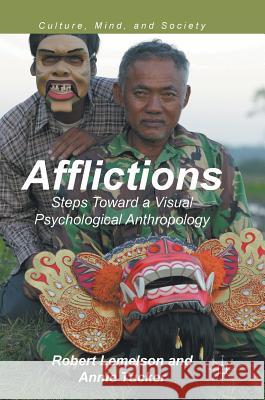Afflictions: Steps Toward a Visual Psychological Anthropology » książka
topmenu
Afflictions: Steps Toward a Visual Psychological Anthropology
ISBN-13: 9783319599830 / Angielski / Twarda / 2017 / 306 str.
Kategorie:
Kategorie BISAC:
Wydawca:
Palgrave MacMillan
Seria wydawnicza:
Język:
Angielski
ISBN-13:
9783319599830
Rok wydania:
2017
Wydanie:
2017
Numer serii:
000288079
Ilość stron:
306
Waga:
0.68 kg
Wymiary:
21.01 x 14.81 x 2.69
Oprawa:
Twarda
Wolumenów:
01
Dodatkowe informacje:
Wydanie ilustrowane











